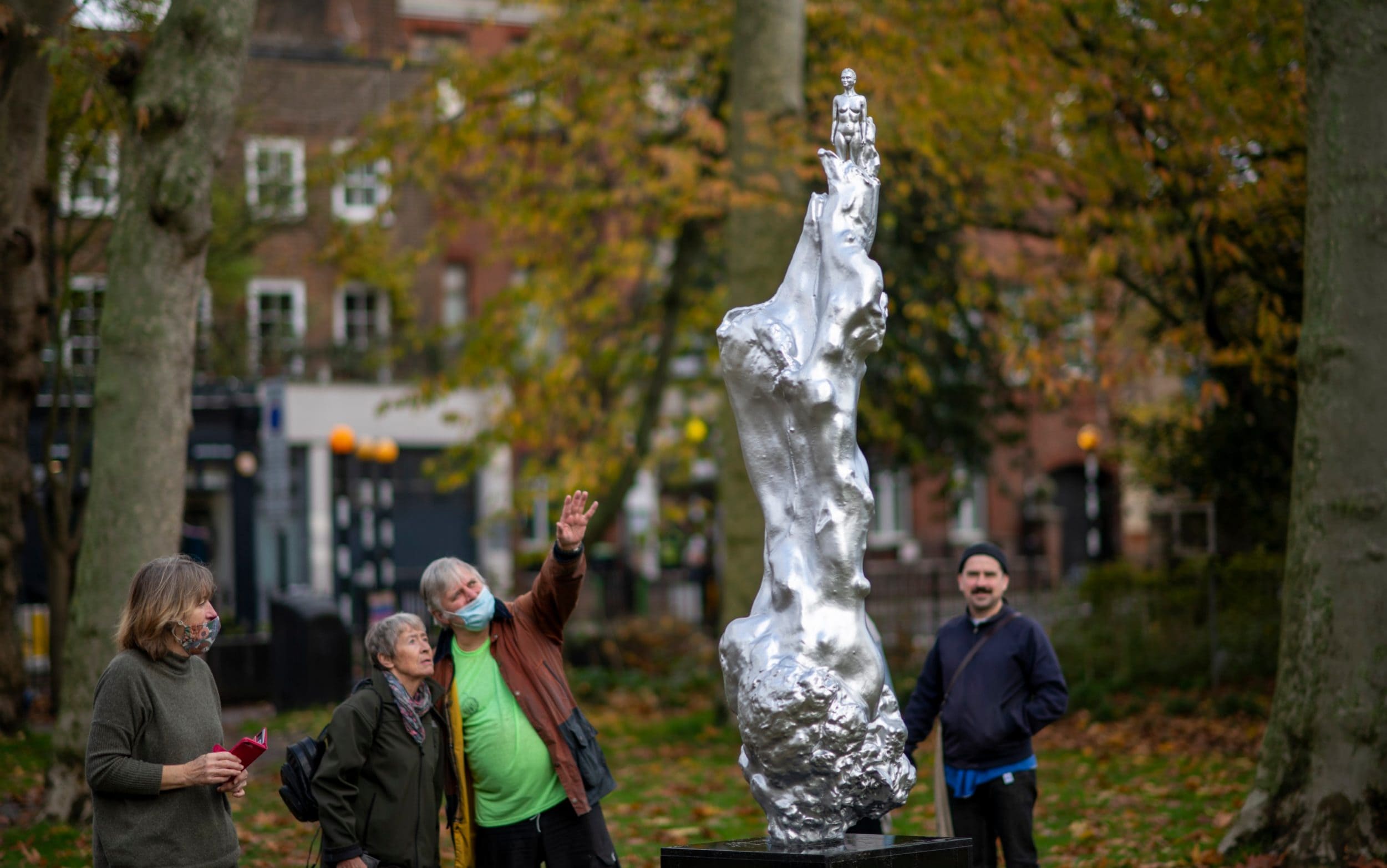A new figure has joined the 3% of non-royal, historical female statues in the UK with the recent unveiling of writer and women’s rights advocate Mary Wollstonecraft. Designed by Maggie Hambling as an unconventional tribute to the spirit of an intellectual radical, the statue depicts a naked woman rising from a silver mass. However, in the ensuing fallout little has felt radical in a debate preoccupied with the female body. 30 years after the Guerrilla girls first asked if women had to be naked to join art history, the answer many feel is still a resounding yes.
Key to the debate is whether Wollstonecraft’s nudity serves any real purpose. Too often associated with the male gaze, there is power in reimagining the female body as Hambling does, liberated in freedom – from clothes and social definition. Yet Hambling fails to reclaim or offer anything new in this clichéd form. Little appears radical in displaying the conventionally attractive female nude. Intentions are obsolete in the face of public interpretation, who with nothing but a quote to go on, see Wollstonecraft’s legacy as nothing more than her body. The nudity of sculpture feels tired and old, succumbing to the ancient tradition of objectification Wollstonecraft so passionately disavowed.
Hambling instead offers us the legacy of ‘the everywoman’. But how many can see themselves represented by a young and thin figure? Even fewer must see themselves in a white and middle-class woman born into prosperity. Why must Wollstonecraft stand for the everywoman when 90% of UK sculptures are men standing alone in their own rights? Feminism is not one size fits all but the equality of voices. It is disappointing to see Hambling, whose previous work celebrates female role models like Dorothy Hodgkin (fully clothed), fail her own radical brief of joining the 3% by failing to depict anyone at all.

In rising from the towering mass of female forms, the statue intends to symbolise the obstacles Wollstonecraft overcame. For example, paternal abuse, little formal education, spousal abandonment and single parenting during the French revolution. Instead, visually she appears trapped by these other women, held back by them not the society she argued limited her. Wollstonecraft’s power came from her female empowerment, pushing for better female education, which the statue fails to truly commemorate.
Not only did the statue derail all conversation from Wollstonecraft’s achievements onto her body, but it is also a wasted opportunity of rare female sculpture. It feels particularly cruel to summarise a woman (discredited as an adulterous whore over revelations about her personal life) via a nude, returning the gaze once again to her body not mind. Much like the rigid and undynamic figure, the arguments around the statue are stagnant, remaining trapped in an old debate they fail to offer little new towards.
Image Credit: The Telegraph

